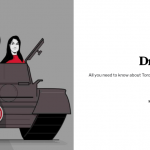Do anchors still matter?
Ryerson Review of Journalism writer Jenna Wootton looks into the real meaning of Dawna Friesen, Global National’s news anchor — and the host of tonight’s Canadian Journalism Foundation’s 14th Annual Awards Gala.
Ryerson Review of Journalism writer Jenna Wootton looks into the real meaning of Dawna Friesen, Global National‘s news anchor — and the host of tonight’s Canadian Journalism Foundation’s 14th Annual Awards Gala.
“Welcome home, Dawna Friesen.” Transmitted through television screens, printed in newspapers and plastered across public spaces, the phrase echoed across Canada as the summer of 2010 came to a close. Global Television and Canwest’s $1 million-plus promotional blitz for Friesen, its new national news anchor, was especially intense in Toronto. A tight shot of her face, balanced by the catch-phrase, appeared on countless billboards, subway platforms and bus shelters. It seemed everywhere you looked you saw the image of a proper, poised and powerful Dawna Friesen.
“My head is really not that big,” Friesen says with mock seriousness before breaking into laughter. She admits that it’s been a bit daunting to see herself in billboard form, though her colleagues say she’s adjusted just fine. Walter Levitt, chief of marketing at Shaw Media — as Canwest is now known — when Friesen was hired, says there was only one aspect of the campaign that made her slightly uncomfortable. At her core, he says, she’s a journalist; she’d rather tell other people’s stories than her own. And that’s just it. Friesen isn’t sure how much her own story matters beyond helping to establish a personal connection with viewers. Levitt saw something more. “You are the story,” he reassured her.
The debate over the proper role and relevance of a news anchor is about as old as television news itself. Call it an endless loop of contention between editorial integrity and a proven market-oriented formula — selling content on the strength of a qualified and engaging anchor. In such a fragmented news world, networks like Global think anchors like Friesen, who combine journalistic credibility with audience appeal, may be more important than ever. CTV, bringing in the well-travelled reporter Lisa LaFlamme as future chief anchor and senior editor of CTV National News, is also betting that this tried-and-true formula will work in a 24-hour news cycle. People are increasingly getting their news “from time to time,” rather than on a schedule, according to the Washington, D.C.-based Pew Research Centre’s Project for Excellence in Journalism.
The numbers seem to back the networks’ decisions. Millions of Canadians watch the national newscasts each night, and in recent years, ratings for the two leading networks have gone up. In the fall of 2004, CTV National News drew 867, 000 viewers a night and Global National had an audience of 671,000. Now, Global averages about a million viewers a night and CTV’s ratings average about 1.3 million. Clearly, they’re not totally off base when it comes to knowing what their audience wants. “It’s hard to understand the psychology behind it,” says Levitt. “TV’s always been a personality medium.”
There’s no hard science behind why having an anchor works, but it’s become obvious that certain characteristics make one successful. According to Kimberly Meltzer, assistant professor of communication, culture and technology at Georgetown University and author of TV News Anchors and Journalistic Tradition, the audience’s expectations are high. She says anchors must be trustworthy, polished, widely experienced, quick on their feet, well-spoken, affable, respected and dignified. They must be perceptive and sensitive in some moments, and tough in others. All of this on top of being “slightly better looking than the average person.” Friesen has high cheekbones, a clear complexion and full lips, which makes it easy to enlarge her face for advertising. But while Meltzer has managed to compile this list through her research, she writes, “The exact amounts of these traits remain an enigma.”
To continue reading, see Do anchors still matter? at the RRJ website.
[node:ad]



